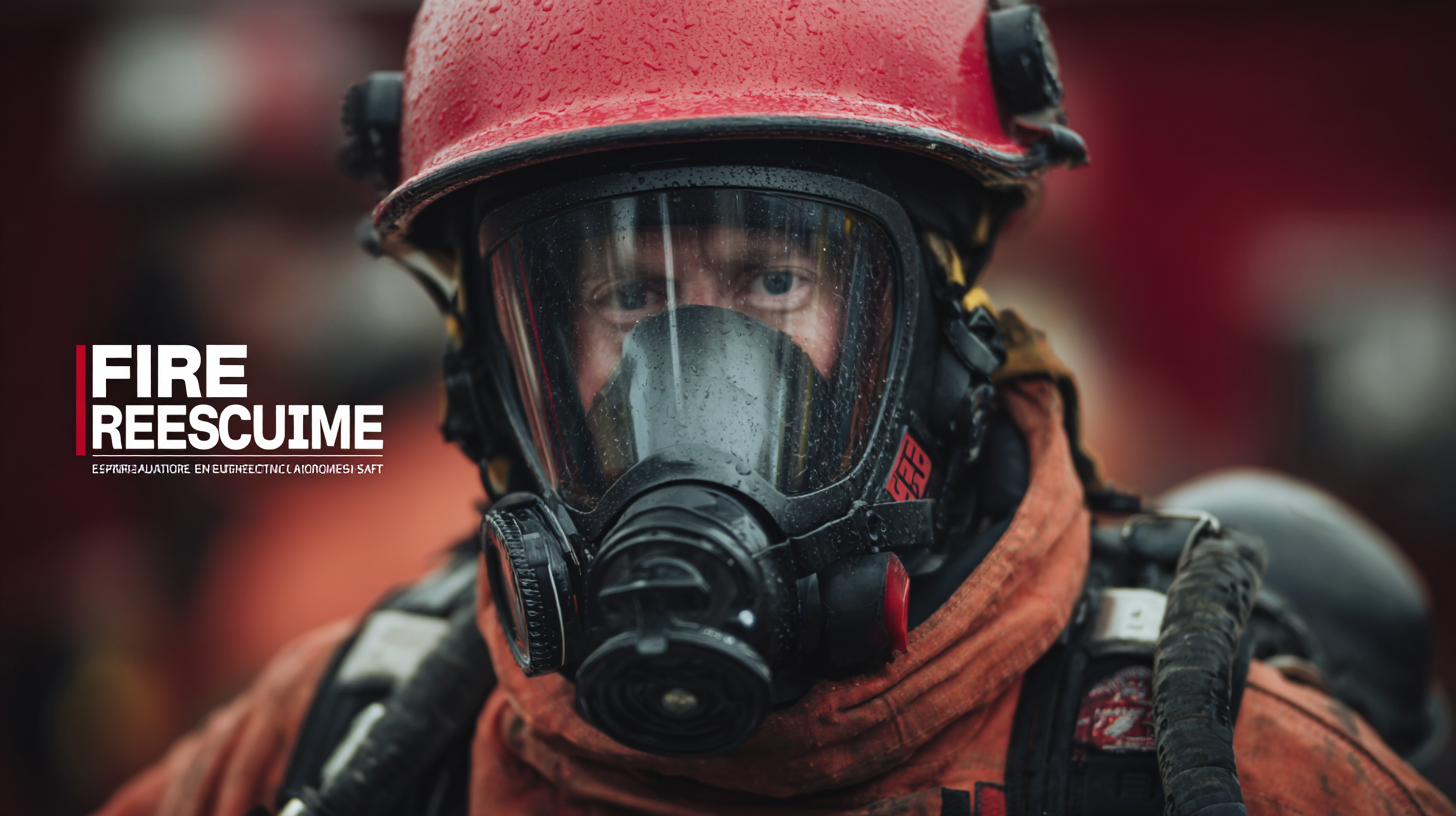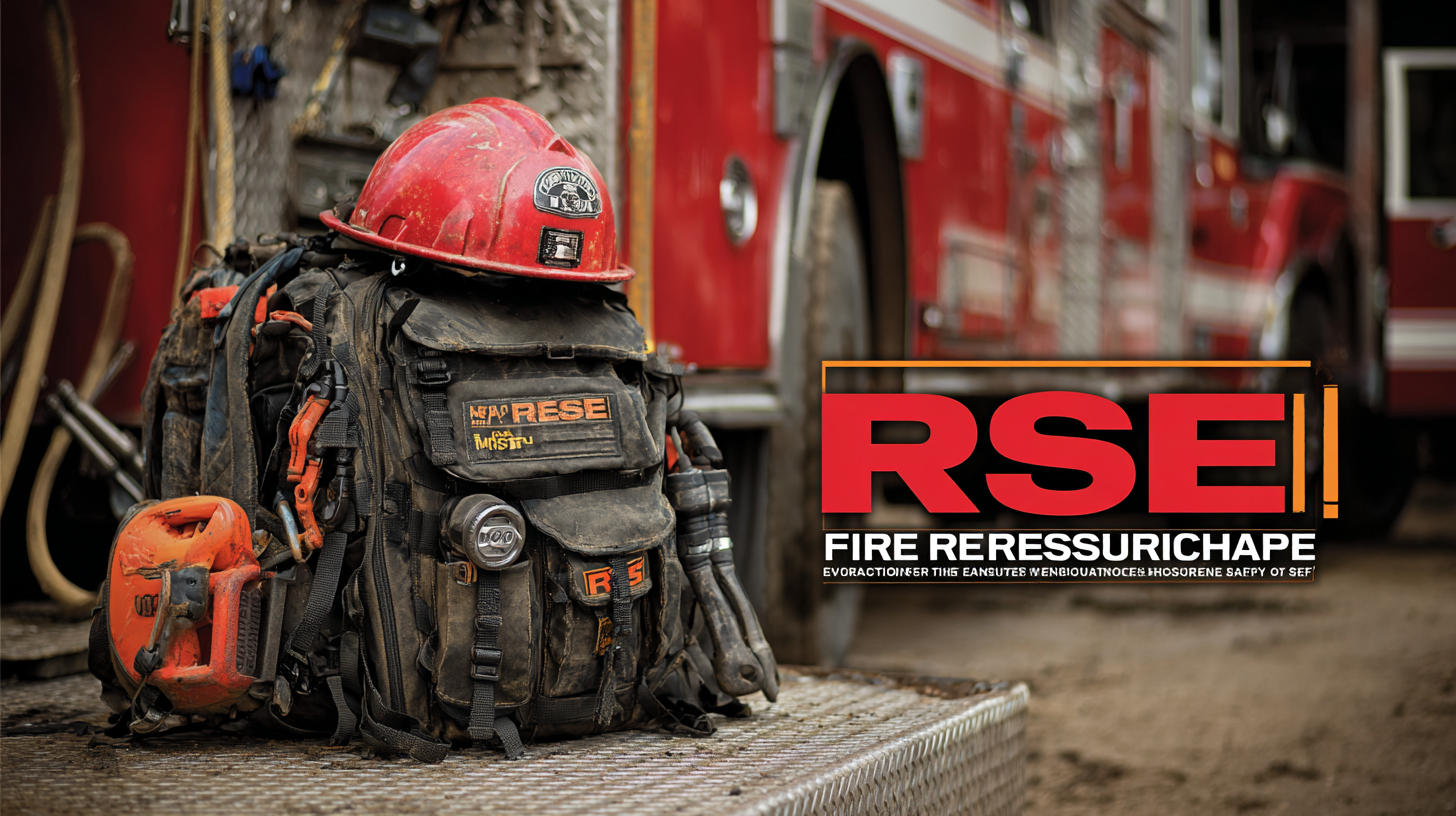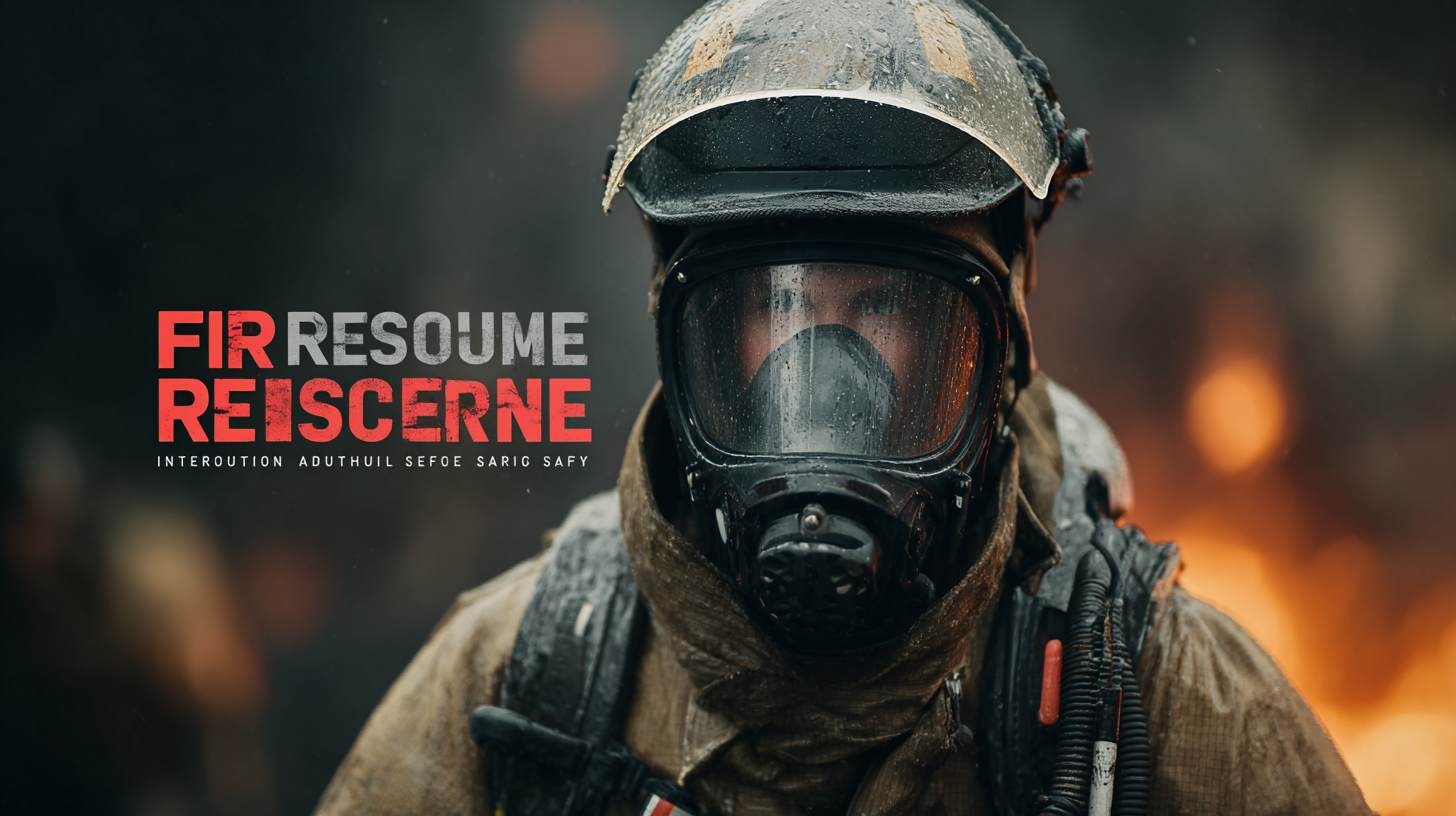Exploring Innovative Alternatives in Fire Rescue Equipment for Enhanced Safety
In the ever-evolving landscape of emergency response, the significance of innovative Fire Rescue Equipment cannot be overstated. As global challenges, such as climate change and urbanization, intensify the frequency and severity of fire incidents, the demand for advanced firefighting tools and technologies becomes paramount. This blog delves into the latest breakthroughs and alternatives in fire rescue gear, emphasizing the commitment to safety and efficiency.

With a focus on the philosophy of "中国制造,全球共享,品质值得信赖," we aim to highlight the efforts of manufacturers who are not only innovating but also ensuring that their products meet international standards of quality and reliability. By examining these innovative solutions, we can better appreciate how they enhance safety protocols for first responders and ultimately protect communities worldwide.
Innovative Technologies Revolutionizing Fire Rescue Equipment
In recent years, the landscape of fire rescue equipment has undergone a significant transformation, largely driven by innovative technologies. Cutting-edge developments in materials science have led to the creation of lighter, more durable gear that enhances the mobility and safety of firefighters in the field. For instance, the integration of advanced composites is not only reducing the weight of protective clothing but also improving thermal resistance, allowing for improved performance under extreme conditions.

Additionally, the use of drones and robotics in fire rescue operations is revolutionizing the way emergency services approach hazardous situations. Drones equipped with thermal imaging can provide real-time data on fire spread and victim location, enabling first responders to make informed decisions quickly. Meanwhile, robotic systems are being deployed in environments unsafe for human entry, effectively assessing dangers and carrying out rescues with precision. These technological advancements are reshaping the methodologies in fire rescue, ensuring that safety is paramount for both rescuers and those in peril.
Real-World Case Studies: Successful Implementation of New Fire Rescue Solutions
In recent years, fire rescue organizations have sought innovative equipment solutions to enhance safety and efficiency during emergencies. Real-world case studies demonstrate how modern technologies are being integrated into fire rescue operations. For example, the implementation of drones in urban settings has significantly improved situational awareness. By providing aerial views during emergencies, drones help firefighters assess hazards and strategize rescues more effectively.
Tip: When incorporating new technology, ensure team members receive proper training to maximize the benefits of these tools. Understanding how to operate drones and other advanced equipment can lead to better decision-making during critical incidents.
Another successful example involves smart clothing equipped with built-in sensors that monitor firefighters' vital signs and environmental conditions. These garments alert teams to dangerous levels of heat and smoke, ultimately reducing the risk of heatstroke and injuries. The adoption of such technology emphasizes the importance of proactive measures in firefighter safety.
Tip: Regularly evaluate the effectiveness of new gear and gather feedback from your team. This can help in refining the selection of equipment and ensuring that it truly meets the needs of rescue operations.
How to Select and Integrate Advanced Fire Rescue Tools in Your Operations
When selecting and integrating advanced fire rescue equipment into your operations, it’s vital to assess both functionality and efficiency. Reports by the National Fire Protection Association (NFPA) reveal that the right equipment can significantly reduce response time; for instance, utilizing thermal imaging cameras can enhance visibility in low-light conditions, leading to a 30% faster victim location. Furthermore, modern firefighting drones equipped with infrared sensors can provide real-time data on hazardous environments, allowing rescue teams to strategize effectively before entering dangerous areas.
To ensure seamless integration of these innovative tools, training and operational protocols must evolve alongside new technology. The International Association of Fire Fighters (IAFF) indicates that departments that prioritize continuous training on advanced tools and practices experience a 40% increase in operational effectiveness during emergencies. Engaging firefighters in the selection process can foster ownership and proficiency, ultimately leading to improved safety outcomes. Investing in cutting-edge rescue equipment and accompanying training programs not only enhances team performance but also boosts community trust in emergency services.
Exploring Innovative Alternatives in Fire Rescue Equipment for Enhanced Safety
| Equipment Type | Innovative Features | Weight (lbs) | Material | Price ($) | Safety Rating |
|---|---|---|---|---|---|
| Fire Rescue Drone | Thermal Imaging, GPS Tracking | 2.5 | Carbon Fiber | 1200 | 5 Stars |
| Self-Contained Breathing Apparatus | Voice Communication, Lightweight Design | 30 | Aluminum | 800 | 4.5 Stars |
| Thermal Imaging Camera | Real-time Heat Detection, Compact Size | 3.2 | Plastic Composite | 2000 | 5 Stars |
| Portable Water Pump | High Flow Rate, Energy Efficient | 40 | Stainless Steel | 1500 | 4 Stars |
| Firefighter Suit | Heat Resistance, Integrated Communication System | 45 | Nomex | 2500 | 5 Stars |
Enhancing Firefighter Safety: Key Features to Look for in Modern Equipment
When it comes to modern fire rescue equipment, the primary focus should always be on enhancing firefighter safety. Innovative features in gear can significantly reduce risks and improve operational efficiency in high-pressure situations. One key aspect to consider is the integration of advanced materials that provide increased durability without sacrificing mobility. Firefighters need equipment that can withstand extreme temperatures while allowing them to move freely and respond swiftly to emergencies.
Additionally, the incorporation of smart technology in firefighting gear is transforming safety protocols. Sensors capable of detecting heat levels, toxic gas exposure, and even the vitals of the firefighter can enhance situational awareness and enable better decision-making on the scene. Personal protective equipment (PPE) enhanced with real-time data transmission can provide command centers with crucial information, allowing for more effective resource allocation. As we explore innovative alternatives in fire rescue equipment, prioritizing these essential features not only safeguards firefighters but also enhances their capability to protect the communities they serve.
Innovative Alternatives in Fire Rescue Equipment for Enhanced Safety
The Future of Fire Rescue: Trends and Innovations Shaping the Industry
As the fire rescue industry continues to evolve, new trends and innovations are emerging to enhance safety for both firefighters and the communities they serve. One prominent shift is the integration of advanced technologies such as drones and thermal imaging systems. Drones enable rapid aerial assessments of fire situations, allowing teams to strategize more effectively, while thermal imaging helps identify hotspots that may not be visible to the naked eye. These innovations significantly improve response times and situational awareness, reducing risks for first responders.
Another crucial trend is the development of lightweight, flexible materials for firefighting gear. Traditional equipment can be cumbersome and restrictive, hindering mobility during critical rescue operations. Innovations in fabric technology are leading to gear that is not only lighter but also more durable and versatile. This advancement allows firefighters to operate more efficiently, ensuring they can navigate challenging environments with ease. As these technologies continue to advance, the focus remains steadfast on enhancing safety and effectiveness in fire rescue operations.

